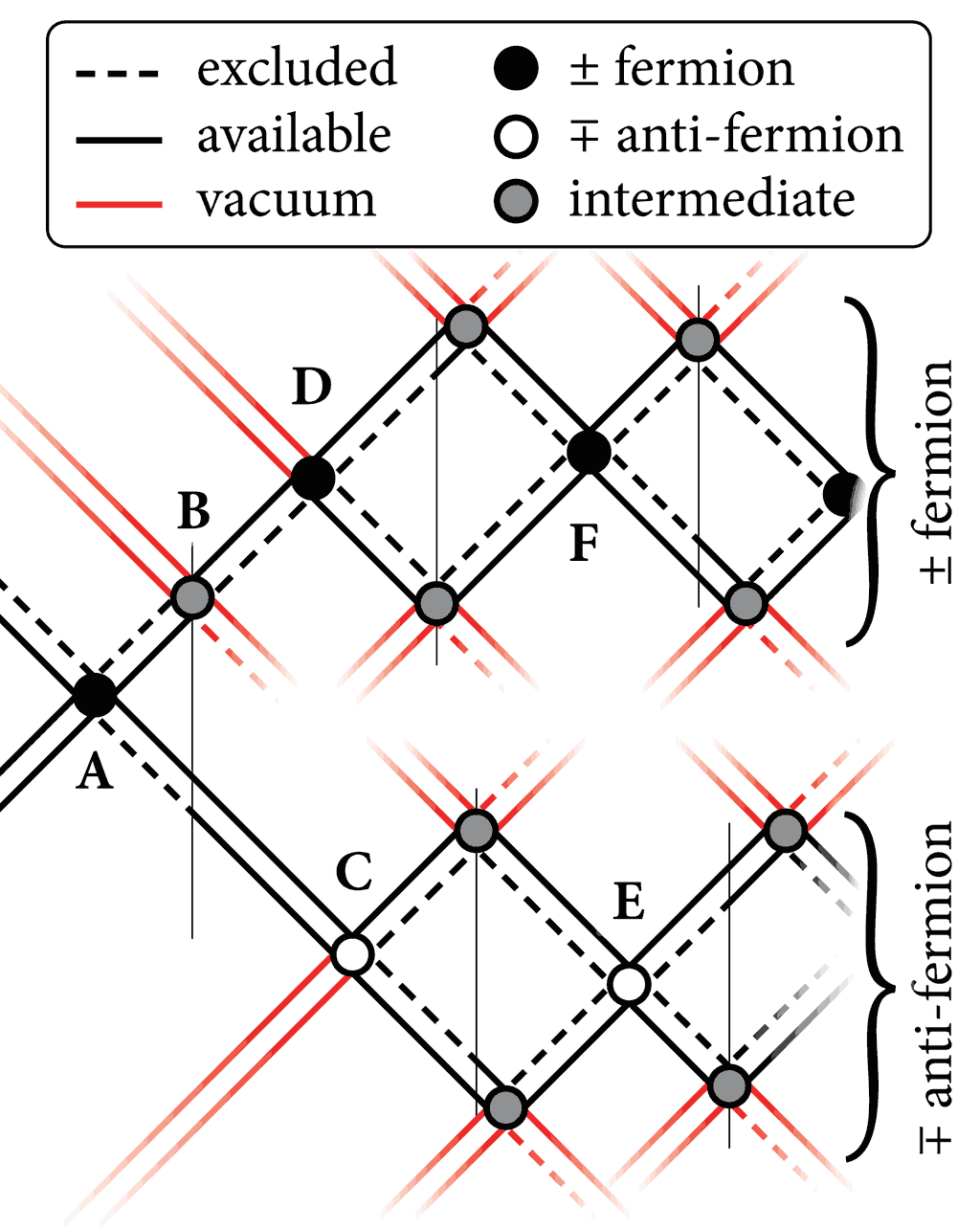Constitution
We define a neutrino as a fermion, being the result of the collapse of two bosons. It has the same fundamental interaction as all fermions, but its bosons have a low value for mass-energy, so collapse with very large radius.
However, we think that their constituents usually do not collapse as neutrinos, because they are collapsed by other entities before they reach the typical Compton radius for a pure neutrino.
State: plasma/soup
We propose that neutrinos, having such a low mass-energy, are presently in a state of plasma or soup, and it would require significantly lower environmental vacuum energy density, free from hadronic matter, before all neutrino constituents form only neutrino particles.
Presently, neutrino constituents will not maintain their identity: due to their low mass-energy, they extend uncollapsed for great distances, and vast numbers of bosons will overlap and interact with bosons of higher mass-energy.
This makes neutrino oscillations difficult to measure, because we are unable to guarantee that a persistent fermion has the same identity of bosons at successive detectors. We must instead detect and count the flavour of many instances and infer flavour changes due to intermediate conditions.
A Significant ingredient of vacuum energy
Neutrinos constituents are a good candidate for the vacuum energy that allows fermions to reconstitute. We assume most of the bosons of vacuum energy to be ‘half-neutrinos’ [7]. That is to say, that two of them may interact to become a neutrino fermion event.
Rather than taking a field-based approach, with continuous matter propagation where events seem spontaneous, we instead specify a deterministic process for (anti-images of) fermions to interact with identifiable instances of vacuum energy.
Weak interaction
This gives us additional detail when exploring vacuum interactions. In the Standard Model, the weak interaction seems only to interact with left-handed matter, because the collapsed boson always has a particular sign for angular momentum at the point of weak interaction, so by definition, it is ‘left-handed’. Reverse this for anti-matter, and you have the weak interaction being right-handed for anti-matter. This can be seen in the diagram for fermion decay, below.

Figure 1. Fermion decay, with input from vacuum energy, to produce further fermions and anti-fermions.[15]
Dark matter?
We think that the bosons that make up neutrinos are responsible for almost all dark matter. Standard cosmology doesn't currently account for these constituents, instead looking at 'whole' neutrinos, reaching the conclusion that there isn't enough neutrino matter to account for dark matter.
Reasonably, in cosmology, we look at 'cold' and 'hot' variants of dark matter: hot being the fast-moving neutrinos. It is the cold dark matter requirement: the stuff that must be lingering outside concentrations of ordinary matter, which causes cosmologists problems with reconciling mass to observations.
In our picture, the vacuum has vast numbers of bosons permeating through space, with a very low intrinsic mass-energy value. These bosons cause fermion events in seemingly empty space (temporary fermions, likely neutrinos), or allow regular matter to collapse. If we were to count up these bosons, and calculate the effect of the temporary fermions, we think we'd have the required dark matter to account for observations.
Further, we build photons with specific structure, and scenarios that fail to meet the criteria will not be emit or absorb radiation as photons, thus it is 'dark' matter.